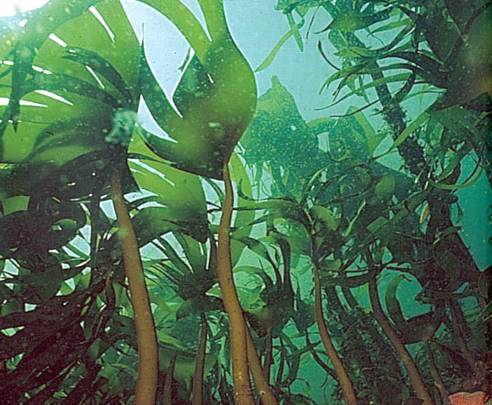Experiencing Roskilde – part 1
Monday, April 12th, 2010 Science cathedral, domkirke, Roskilde, viking ships, vikingeskip, vitenskap None
—
For the science stuff;
go HERE
Wow, this weekend was really great! On Friday I was really exhausted and went right home from the University (RUC), ate dinner and crashed in my room. I love to hang with Hartvig and Stein, but I need time by my lonesome from time to time – again, there is no doubt about that :)
I decided to take some time off to see Roskilde. That is, to see Roskilde without dirty beer drinking music lovers that usually take over the town in summer (Roskildefestivalen). Although I’ve been to that event a couple of times (:D and love it!) I must say it is much lovelier this time of the year with the beautiful blooming gardens and clean streets…
On Saturday I went to see the Roskilde Cathedral. It was huge! Even though I’m not a religious person it struck me with awe… – All the kings and queens that lies there dating back to the end of the year 900… gives me goose bumps. For anyone visiting the town I would recommend at least a short visit (and to you mamma, if you read this, I WILL get you pictures in time, just didn’t bring my camera this time around…). More info on the Cathedral can be found here: Roskilde Cathedral.
On Sunday I visited the great Museum of Vikingships in Roskilde. More info on that can be found here: Vikingeskibsmuseet. It was quite similar to the one found in Oslo, but I dare say (I’m sorry) a bit fresher with their state of the art buildings. I’ll post some pictures very soon.
I actually didn’t know that Roskilde and the area around played such an important part in both Danish and Scandinavian history. I learned a great deal. The five ships that are put on display were excavated from 1957-1959. The ships were sunk (probably in summer 1079) as part of an under water defence. The construction would force incoming ships to take routes where they more easily could be discovered by land posts. The need for these massive measures arose with the increasing threats of a Norwegian attach. Historians assume that an attack sprung out from Kragerø in Norway actually took place around this time.
Even more fascinating, I think, is the display of a reconstruction of one of these ships. It is a long ship they have called Havhingsten or the Sea Stallion of Glendalough (the original ship was probably built in Dublin in the year 1042).
The reconstruction was sailed (and rowed) from Roskilde, via Norway, the Orkney Isles and Scottland through storm and seasickness all the way to Dublin where it was displayed for 10 months. From there on, it journeyed through the Celtic Sea, the English coast to Holland and the North Sea and back to Denmark. Quite impressive. It must have been quite a ride! :) More info about this project can be found here: Havhingsten.
In Roskilde doing Science
Well, it finally happened. My trip to Roskilde was set. Just before, or more correctly in the beginning of our Easter holiday, I got the message: You are expected. I had to jump into my field gear, ditch all other plans and catch a plane to Bergen (the west coast) to collect some juvenile kelp (- about 200 individuals!)… One of my supervisors joined me a couple of days later by car to Grimstad in the south to get some individuals from there as well. Just before leaving for Denmark we collected some individuals from Drøbak (close to Oslo). On April 7. my two supervisors and I drove down from Oslo to Roskilde, which is my current location :) Next week it’s down to business. Hard core science! I’m going to run PI-curves (by O2 measures) at 10, 15 and 20 C to see where the point of compensation lies (where photosynthesis in the kelp meets its respriation). Then we’re going to let the kelps acclimatise for two weeks at 10, 15 and 20 C to run another set of PI-curves. EXCITED! The results may provide the backing I need for stating my hypothesis on why the kelp is disappearing – with confidence!! :D
Marinbiologene DA update!
Monday, April 5th, 2010 Ecology, Marine biology, Science marinbiologene, vitenskap None
Today we had a breakthrough at Marinbiologene DA. The first sketchy parts of our blog was formed, and it is already starting to look promising. Next out is getting our website up and running. Really looking forward to that. The idea that brought forth this project was first conceived in 2006. It’s been on hold partly because we didn’t quite know where to begin and partly because of other work that had to be done. Our aim is to establish a base of information concerning research on marine biology in Norway, monitoring, conservation and management of our coastal systems and to educate people on the importance of caring about the marine environment. These are our first baby steps…
marinbiologene blog (in Norwegian)
Kelp Forest Ecology – Why I Bother
Laminaria hyperborea, wich dominated the wave exposed areas, have been…
Global tapping av havområder!
Sunday, March 21st, 2010 moro, oceanografi, vitenskap None
Det er bekreftet fra flere verdensdeler nå. Global tapping av verdenshavene er et faktum. Vi har sett det med våre egne øyne. Vitenskapsmenn verden over tar feil! Sist mars, da jeg var i Tromsø ble det helt tydelig for meg. Vannet sank med over 1 meter i løpet av få timer. Jeg så det selv! Sivilisasjonens undergang blir ikke drukning, men fravær av kystlinje. Tenk på badeturistene, hva vil skje med Venezia og herregud, jeg orker nesten ikke tenke på det, men… hva kommer til å skje med delfinene?!
I just love this guy! Read Global Draining @Southern Fried Science
Back


